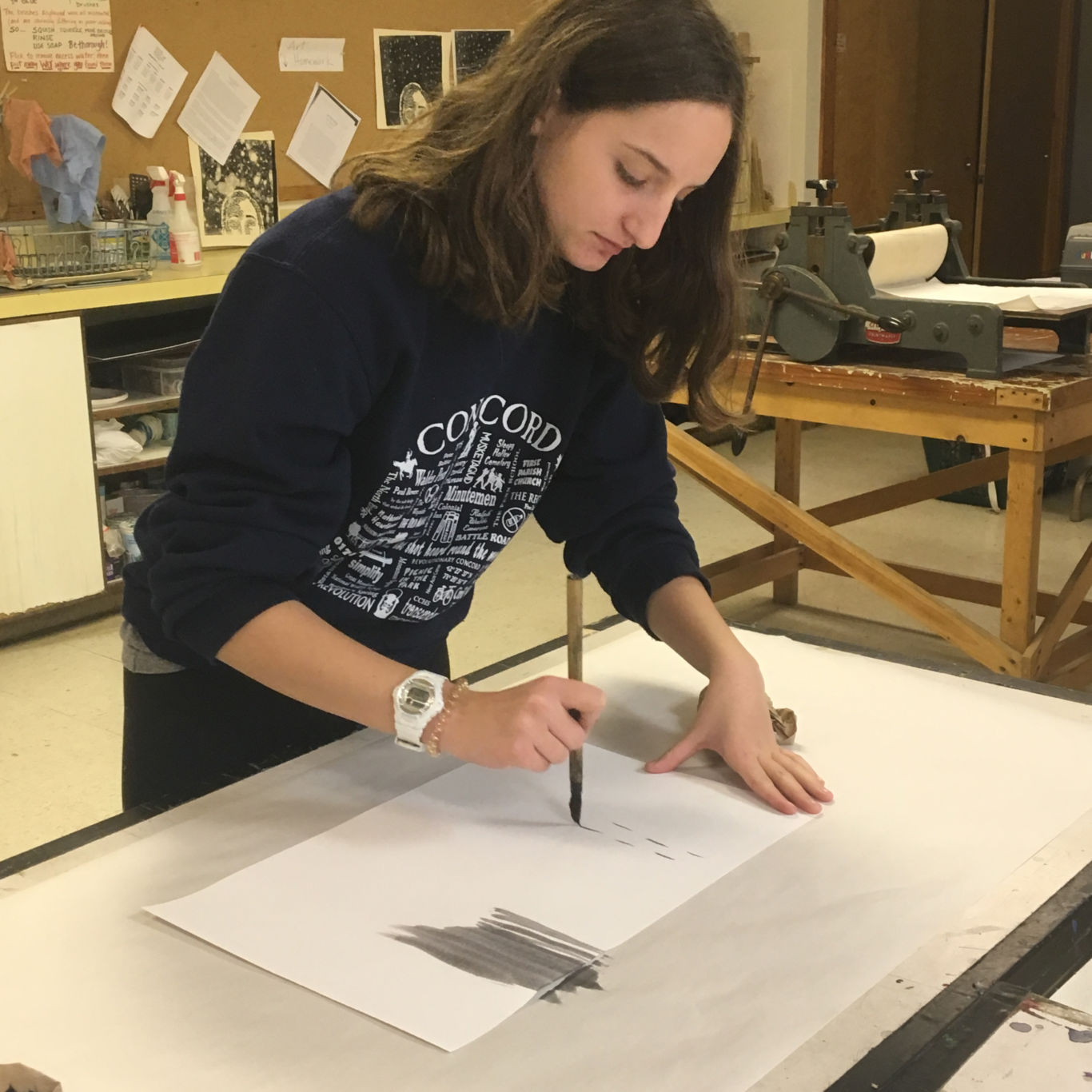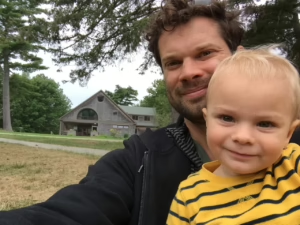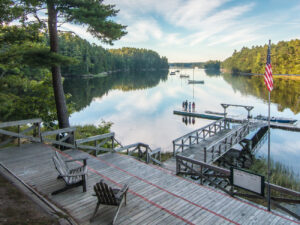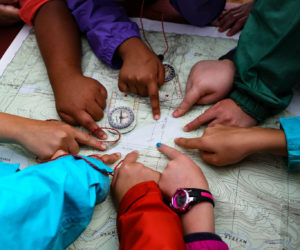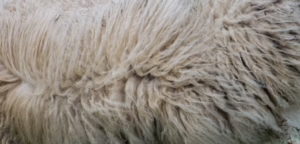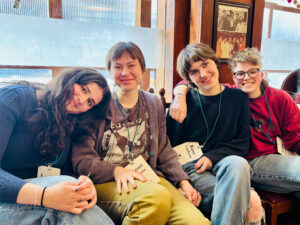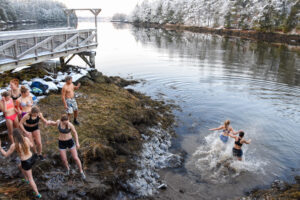Floating is one of the first things art teacher Sue West asked her students to do when they arrived for Maine Coast Semester 61 at Chewonki. On a late-summer afternoon, they splashed into Montsweag Brook’s salty water and then drifted, letting the tide carry them. “I asked them, Why float on the tide?” she says, her eyes and smile wide.
“They gave me wonderful answers,” she says, “things like ‘We’re learning to go with the flow and discover what we can’t see yet.’ Afterwards we played with watercolors, which are pigments floating in water,” finding visual ways to describe the experience or what it set afloat in their thoughts.
This is a perfect Sue West way of inviting students into art-making: put them into a direct encounter with nature; let it unfold; support them as they describe and respond through art.
“I want to draw out of my students their wisdom,” she says. “My teaching is less about me telling them what to do and more about letting them know that we are all in this together, all learning together.”
The point of her art course, Art and the Natural World, she says, is “not just to draw pretty pictures, but to interact with the environment around them. Most students have limited free-flowing awareness of nature. Many have gone on amazing trips to beautiful places, but they don’t necessarily think of nature in many forms playing a role in everyday life.” Think: trees, pencils, lunch tables, cabins, paper, apples, firewood.
“I hope the nature experiences they have in art class will develop their sense of self,” she says.
She sends her students with sketchbooks to places on Chewonki Neck where they find instructions such as “Draw with one continuous line” or “Try working with many short lines that overlap.” They settle in to study the world around them.
Sometimes she invites an owl over from the Wildlife Lab, which they draw or paint with any combination of ink, charcoal, graphite, or paint. Sometimes she and her students venture into the snowy woods to cut a small tree to bring back to the art room to draw–and ponder. “Asking them to cut–kill–a tree is an opportunity for them to consider how they depend on natural resources harvested or mined for them…It helps them make art that is rooted in a richer sense of place,” she says.
This semester, students have also focused on insect pollinators, sense of history, sense of self, and activist art inspired by marine biologist, conservationist, and author Rachel Carson. (Of the Carson project, West says, “The students need to understand the power of being grounded in really good facts. We need many more Rachel Carsons.”)
Last week, Semester 61 students were taking a breath after having just mounted their own art exhibition. West had them discussing a Laura Sewall essay about using the imagination and then asked them to move and paint in response to the sound of falling rain.
“I find my students so fascinating,” she says. “Some of what I see now is the fallout from being driven in a linear way toward a perceived goal,” such as college admissions or the ideal job. “It’s important for them to come here to have a more balanced way of seeing themselves and the world,” she says.
One of the key concepts she conveys is that “There is value in exploring a multifaceted process of making creative work vs. rushing toward a finished product. I say to them, ‘Even if your work of art is not perfect, you’ve made something that never existed before. That’s a kind of magic.’”
In her effort to teach students about art-making, West makes sure they meet Maine artists. “I want them to be with working artists who are open and taking risks and making mistakes,” she says. “It helps take away the strange feeling our society has developed that there is just one right way to do things.”
This fall, students met Keith Rendall, a printmaker whose work focuses on animals (he brought with him a linoleum block print of a honeybee); Kdb Dominguez, who documented the local ecosystem in paintings and photographs for four years to create her Wilderland Climate Change Project; and Daniel Minter, a painter, illustrator, and sculptor whose work explores race. The class visited Minter’s exhibition of paintings about Malaga Island, where in 1912, for no good reason, the State of Maine eradicated a small interracial fishing community.
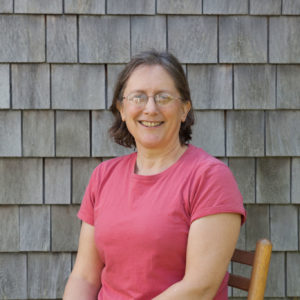 West is the only Maine Coast Semester faculty member who has been with the program since it started. Her connection with Chewonki is even longer: she began by teaching science and art in other Chewonki programs before the semester existed. Despite decades of teaching, her enthusiasm for what she does is as powerful and present as the tide in Montsweag Brook.
West is the only Maine Coast Semester faculty member who has been with the program since it started. Her connection with Chewonki is even longer: she began by teaching science and art in other Chewonki programs before the semester existed. Despite decades of teaching, her enthusiasm for what she does is as powerful and present as the tide in Montsweag Brook.
“I love teaching here,” she says. “It’s a gift to have wonderful, engaging students who want to dive in. When I come across people who don’t have hope for the future, I always think, I do-–because I am with these remarkable young people all the time.”



